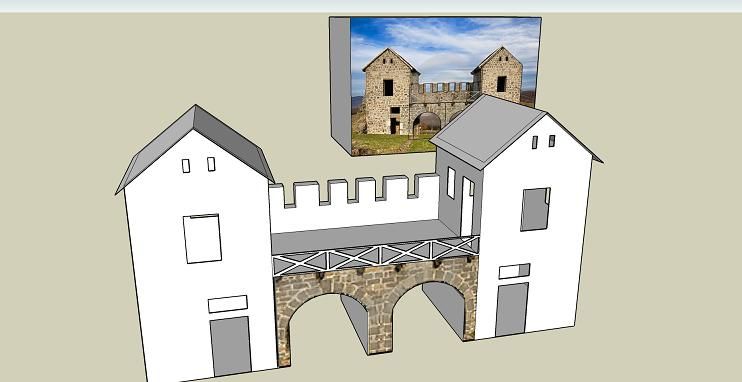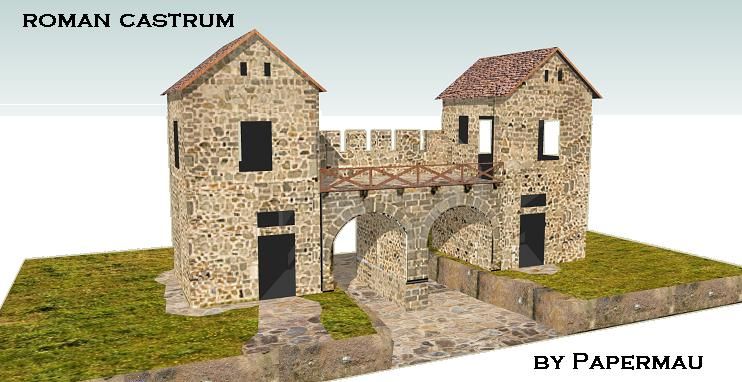Tuesday, October 11, 2011
Bamboo Blade Anime Paper Dolls - by A C Gateway
Bamboo Blade is a Japanese manga series written by Masahiro Totsuka, and illustrated by Aguri Igarashi. The manga was first serialized in the Japanese seinen manga magazine Young Gangan starting December 3, 2004. An anime adaptation was broadcast in Japan between October 2, 2007 and April 2, 2008 on TV Tokyo. The series tells the story of Toraji Ishida, a luckless high school Kendo instructor, who is challenged by his former upperclassman, also a kendo instructor, to a competition between their female students. The bet inspires Toraji to gather and train a team of five girls. Fortuitously, at this time he meets Tamaki Kawazoe, a gifted young female kendo practitioner. - Wikipedia
Bamboo Blade conta o dia-a-dia de um clube escolar de kendo. O clube tem como treinador o azarado professor Toraji Ishida que, no começo do anime, enfrenta uma crise, pois apenas um membro do clube está em atividade. Inicialmente a série mantém o foco na luta do clube pela sobrevivência, já que, para existir, é preciso ter uma quantidade mínima de membros. Aos poucos o grupo vai sendo formado, e é aí que a coisa esquenta: os personagens da série são extremamente cativantes. Sobre o enredo de Bamboo Blade não há muito o que dizer. É quase um ”slice of life“, acompanhando a vida dos membros do clube em seus treinamentos e campeonatos. É um anime muito gostoso de ser assistir, dono de um clima muito bem humorado, de um ritmo perfeito e que apresenta situações muito engraçadas. A série também conta com alguns momentos sérios, já que todos os personagens possuem algum problema ou frustração. - animehaus.com.br
Link: Bamboo.Blade.Anime.Paper.Dolls.by.A.C.Gateway
More Paper Dolls related posts:
Sophitia - Japanese Paper Doll - by Rokunoya
Bamboo Blade Anime Paper Dolls - by A C Gateway
Ruri Ruri Paper Doll Anime Style - by Moekami - Boneca Estilo Anime
Roman Castrum In Romania - by Papermau - Second Part


More some images of the development of this model, captured from Sketchup :
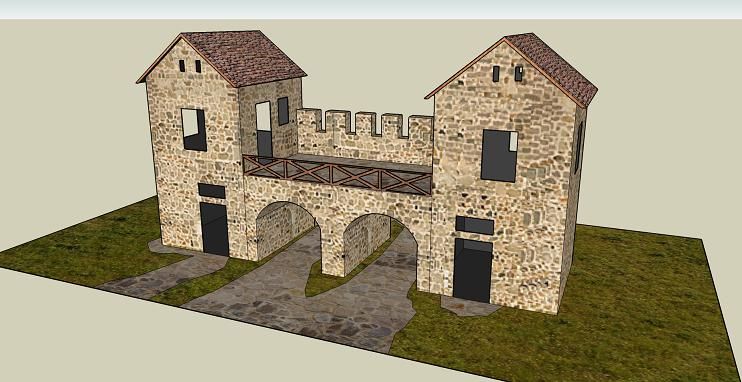
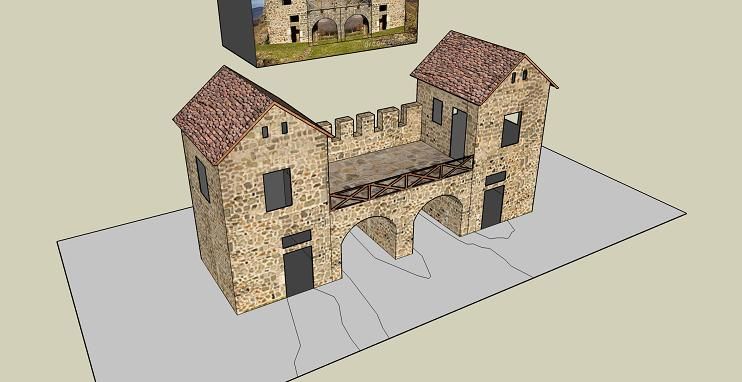
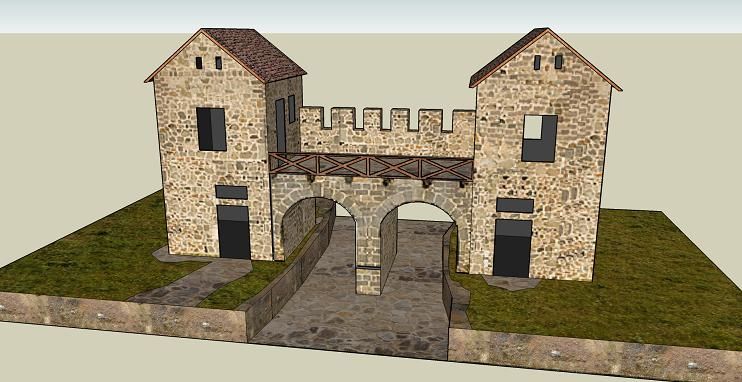 |
| And in these last three images, you can see the development of the base, with the lower gate passage. |
The next step is to separate the various parts of the model, and then unfold it in Pepakura.
O próximo passo é separar as várias peças do modelo, para depois desdobrar no Pepakura.
Soon.
More Roman Castrum In Romania related post:
Roman Castrum In Romania - by Papermau - First Part
Sci-Fi Series Stargate M.A.L.P. Vehicle - by Laul
This M.A.L.P. vehicle from Stargate, very detailed and with incredible textures, was made by Laul, a great French designer. You can see more Sci-Fi paper models in his page, to download for free.
| Stargate Crew - Do You Know Who Was McGyver? |
M.A.L.P.s come in various configurations and equipment. For example, the original device used when the Earth gate was first activated ran on all-terrain treads, while the newer models used by Stargate Command run on six heavy-duty wheels. - www.gateworld.net
Stargate is a military science fiction franchise, initially conceived by Roland Emmerich and Dean Devlin. The first film in the franchise was simply titled Stargate. It was originally released on October 28, 1994, by Metro-Goldwyn-Mayer and Carolco, and became a hit, grossing nearly $200 million (USD) worldwide. Three years later, Brad Wright and Jonathan Glassner created a television series titled Stargate SG-1 as a sequel for the film.
| The "Real" Thing |
Na indústria do entretenimento, o termo Stargate refere-se às produções americanas de ficção científica (do gênero "Space Opera") que tiveram início com o longa-metragem para o cinema Stargate, em 1994, e que hoje incluem três mini séries: Stargate SG-1 (1997-2007 - 10 temporadas), Stargate Atlantis (2004-2009 - 5 temporadas), Stargate Universe (2009-2011 - 2 temporadas), uma telessérie de animação e diversos romances e outras fontes, de modo a formar um extenso universo ficcional. - Wikipedia
Uma curiosidade: O ator que faz o papel principal do 1º seriado Stargate, é Richard Dean Anderson, o eterno McGyver, da série homônima dos anos 80.
Link: Sci-Fi.Series.Stargate.M.A.L.P.Vehicle.by.Laul
More Sci-Fi related posts:
Star Wars - X-Wing Starfighter - by J. Leslie
Sci-Fi Space Ships - by Pierre Fontaine - Naves Espaciais
Gun Walker Combat Vehicle - by Shunichi Makino
Great Torii of Itsukushima In Japan - by Bernard Buzuc - Grande Torii
This cool and unusual model was made by Bernard Buzuc, a great French designer and paper model enthusiast and is originally posted at Le Forum Em Papier, one of the best European paper model forums.
| The Real Thing |
Built on axis with the sea-facing shrine, the gate serves to welcome spirits of the departed as they come in across the water of Japan's Inland Sea. At low tide, visitors walk around the great columns of the structure, measuring its great size against the human body. At high tide, the rugged vermillion gateway seems to float in the waves around it, a gateway for boats, or for spirits indeed. - Kevin Matthews
Itsukushima Shrine is a Shinto shrine on the island of Itsukushima (popularly known as Miyajima) in the city of Hatsukaichi in Hiroshima Prefecture in Japan. The shrine complex is listed as a UNESCO World Heritage Site and the Japanese government has designated several buildings and possessions as National Treasures.
Este belo e incomum modelo foi feito por Bernard Buzuc, um grande modelista francês e entusiasta do papel modelismo. Ele está postado originalmente no Forum Em Papier, um dos melhores foruns europeus sobre paper models.
| The Torii At Low Tide |
Considerado pelos japoneses como um dos três cenários mais bonitos do país, o Torii do Santuário Itsukushima parece flutuar na água. O chefe militar Taira no Kiyomori, que doou fundos para o santuário, construiu o primeiro Torii naquela baía, no século XII. A estrutura atual data de 1875 e tem cerca de 16 metros de altura.
O Santuário de Itsukushima é um santuário xintoísta situado na ilha de Itsukushima, perto da cidade de Hatsukaichi, na província de Hiroshima, no Japão, que foi construído sobre as águas. Foi considerado Património Mundial da Humanidade pela UNESCO em 1996 e está protegido por severas leis de proteção do património japonês.
| The Temple Seen From The Torii |
Link: Great.Torii.of.Itsukushima.In.Japan.by.Bernard.Buzuc
More Japanese Traditional Architecture related posts:
Takadono Tatara - Old Steel Industry - by Sugatani
Japanese Pagoda - by Otonchin.Soreccha.JP - Pagode Japonês
Japanese Buildings - by Nostalgic Work Club - Lojinhas Japonesas
Monday, October 10, 2011
Micro Scale French Train TGV - by Rail Fan Europe
More than fourty models of TGV French trains, by Rail Fan Europe, im 1/140 scale.
| The Real Thing |
At mid 2011, the TGV is the fastest conventional train in the world, reaching 320 km/h (200 mph) on the "LGV Est". - Wikipedia
| Australian Speedrail |
O TGV Paris-Estrasburgo circula a uma velocidade máxima de 320 km/h, ou seja, vinte quilómetros por hora mais rápido do que as outras linhas TGV em atividade na França. - Wikipedia
Link: Micro.Scale.French.Train.TGV.by.Rail.Fan.Europe
More Trains related posts:
Brazilian Touristic Express - by CPTM - Expresso Turístico
Mitake Mountain Cable Car - by Keio - Bonde da Montanha Mitake
Deshler Tower Paper Model - by Dan Merkel - Torre Ferroviária
The Three Wise Hearts - by Phil Creations - Os Três Corações Sábios
Three Wise Hearts are a twist of the old Three Wise Monkeys (see no evil, hear no evil, speak no evil). I thought it was better to focus on the solution rather than the problem... - Phil Creations
The Three Wise Monkeys , sometimes called the Three Mystic Apes, are a pictorial maxim. Together they embody the proverbial principle to "see no evil, hear no evil, speak no evil". The three monkeys are Mizaru, covering his eyes, who sees no evil; Kikazaru, covering his ears, who hears no evil; and Iwazaru, covering his mouth, who speaks no evil. Sometimes there is a fourth monkey depicted with the three others; the last one, Shizaru, symbolizes the principle of "do no evil". He may be shown crossing his arms. There are various meanings ascribed to the monkeys and the proverb including associations with being of good mind, speech and action. In the Western world the phrase is often used to refer to those who deal with impropriety by looking the other way, refusing to acknowledge it, or feigning ignorance. - Wikipedia
Uma interpretação muito própria dos Três Macacos Sábios. " Não vejo o mal, não ouço o mal, não falo mal."
Os Três Macacos Sábios ilustram a porta do Estábulo Sagrado, um templo do século XVII localizado no Santuário Toshogu, na cidade de Nikko, Japão. Sua origem é baseada em um trocadilho japonês. Seus nomes são mizaru (o que cobre os olhos), kikazaru (o que tapa os ouvidos) e iwazaru (o que tapa a boca), que é traduzido como não ouça o mal, não fale o mal e não veja o mal. A palavra saru, em japonês, significa macaco e tem o mesmo som da terminação verbal zaru, que está ligado à negação.
O folclore japonês diz que a imagem dos macacos foi trazida por um monge budista chinês, no século XVIII. Apesar disso, não há comprovação dessa suposição. - Wikipedia
Link: The Three Wise Hearts - by Phil Creations
More Japanese Traditions related posts:
Nikko Tosho-gu Shrine - by Kids Net - Santuário Japônes
Hinakazari Japanese Decoration - by Canon - Decoração Japonesa
Traditional Japanese Food - by paperm.jp - Comida Japonesa
WW2 German Tank PzKpwf VI. Tiger In 1/100 scale - by Rawen
Matchbox size model. One of the most powerful tanks in WW2 on German side. Bonus model: Kubelwagen and acessories.
Do tamanho de uma caixa de fósforos. Um dos mais poderosos tanques alemães da Segunda Guerra Mundial. E de bônus: um Kubelwagen e vários acessórios.
Link: WW2.German.Tank.PzKpwf.VI.Tiger.In.1/100.scale.by.Rawen
More WW2 and Military related posts:
Soviet And German Tanks - by Naka - Tanques - Soviético e Alemão
WW2 Military Vehicles - by Toni Mauricio - Veículos Da Segunda Guerra
WW2 Poland Trailer - by Renova Model - LINK IS ON
Roman Castrum In Romania - by Papermau - First Part
A castrum was a fortified military building by the ancient Romans, sometimes reconstructed.
This model is freely based in a gate entrance located at Porolissum, an ancient Roman city in Dacia, Romania.
Porolissum was an ancient Roman city in Dacia. Established as a military camp in 106 during Trajan's Dacian Wars, the city quickly grew through trade with the native Dacians and became the capital of the province Dacia Porolissensis in 124. The site is one of the largest and best-preserved archaeological sites in modern-day Romania.
Porolissum foi uma cidade Romana na Dácia. Fundada em 106 d.C. como um campo militar, e em 124 d.C. tornou-se a capital da Dácia Porolissensis. Situada próxima a cidade de Moigrad, em Salaj, é um dos mais bem preservados sítios arqueológicos da Romênia.
Some Images Of The Development Of This Model, captured from Sketchup :
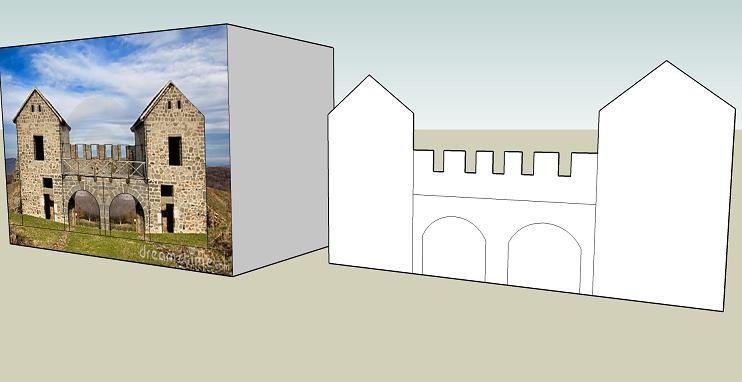
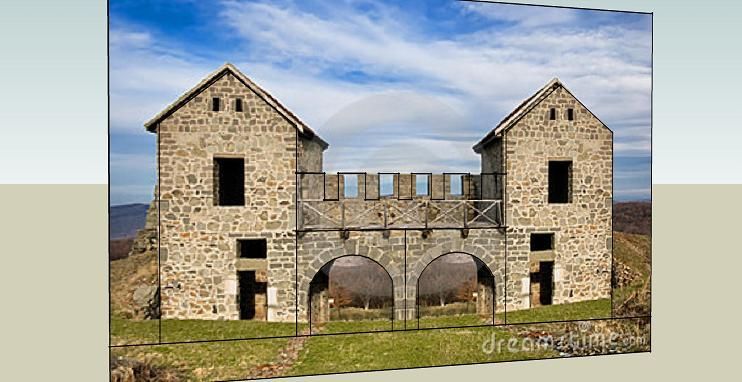
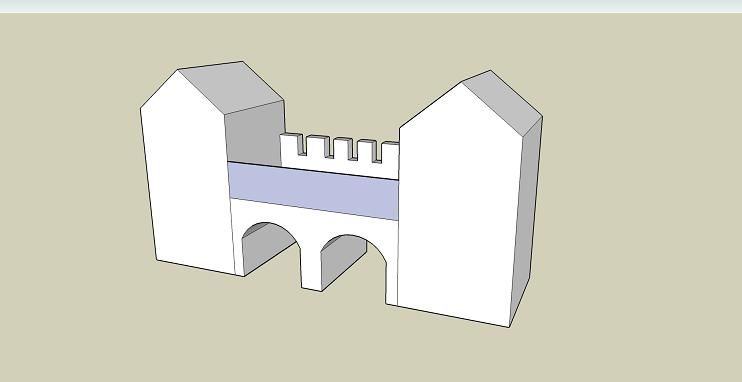 |
| In the first image above the original photo, as with some sketches, only the outline of the castle. In the second image, the outline is posted here and in the third image it is "pulled", it being in 3D. Na primeira imagem acima a foto original, já com alguns esboços , somente o contorno do castelo. Na segunda imagem, o contorno é destacado e aqui na terceira imagem ele é "puxado", ficando em 3D. |


More soon...
Little Monsters from Mostruo Nintendo Game- by Ushimitsu
My daughters Malu and Maiu say that they are "cute", so they are "cute". From Nintedo Wii and Nintendo 3DS consoles, six little monsters to celebrate the Halloween.
Minhas filhas Malú e Maiú dizem que eles são "fofos", então eles são "fofos". Das telas do Nintendo Wii e do Nintendo 3DS, seis monstrinhos para alegrar seu Dia das Bruxas.
Link: Little.Monsters.from.Mostruo.Nintendo.Game.by.Ushimitsu
More Videogames related posts:
Tomb Raider`s Lara Croft With Quad Bike - by Ninjatoes
Twilight Princess Medieval Soldier - by Ignatus - Soldado Medieval
Terrific`s Ridge Racer Paper Car - by Jan Rükr
Sunday, October 9, 2011
Link Trainer Flight Simulator - by Currell Graphics - 1º Simulador de Voo
The term Link Trainer, also known as the "Blue box" and "Pilot Trainer" is commonly used to refer to a series of flight simulators produced between the early 1930s and early 1950s by Ed Link, based on technology he pioneered in 1929 at his family's business in Binghamton, New York.
These simulators became famous during World War II, when they were used as a key pilot training aid by almost every combatant nation. The original Link Trainer was created in 1929 out of the need for a safe way to teach new pilots how to fly by instruments.
A former organ and nickelodeon builder, Link used his knowledge of pumps, valves and bellows to create a flight simulator that responded to the pilot's controls and gave an accurate reading on the included instruments.
More than 500,000 US pilots were trained on Link simulators, as were pilots of nations as diverse as Australia, Canada, Germany, United Kingdom, Israel, Japan, Pakistan and the USSR.
The Link Flight Trainer has been designated as A Historic Mechanical Engineering Landmark by the American Society of Mechanical Engineers. The Link Company, now part of L-3 Communications, continues to make aerospace simulators.
O termo Link Trainer , ou Treinador Link, também conhecido como "Caixa Azul" e "Treinador de Piloto" é comumente usado para se referir a uma série de simuladores de vôo produzidos entre os anos 1930 e início dos anos 1950 por Ed Link, com base em uma tecnologia revolucionária.
Este simulador fez fama durante a Segunda Guerra Mundial, quando foram fundamentais para o treino e formação de pilotos por quase todas as nações envolvidas no conflito.
O Simulador Link original foi criado em 1929, devido a necessidade de ensinar novos pilotos a voar por instrumentos.
Mais de 500.000 pilotos dos EUA foram treinados em Simuladores Link, assim como pilotos de países tão diversos como Austrália, Canadá, Alemanha, Reino Unido, Israel, Japão, Paquistão e da URSS. As Indústrias Link continuam a fazer simuladores, agora aeroespaciais.


